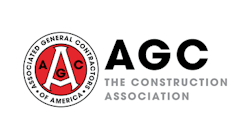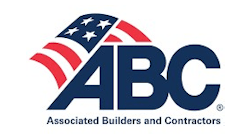There are three main types of equipment financers: commercial banks, commercial finance companies, and the financial subsidiaries of equipment manufacturers. These sources account for more than 90% of available financing for equipment purchases. The remainder is provided by community development organizations, government agencies, and companies whose primary business is leasing.Commercial BanksThe primary type of loan made by a commercial bank is the short-term, unsecured business loan. Larger commercial banks make some term loans for periods up to 12 years. Since commercial banks are limited to how much they can lend to a single borrower (measured as a percentage of the bank’s capital and surplus), loans might not be available from commercial banks–even to credit-worthy borrowers. Often a commercial bank will syndicate a large loan by forming a credit group made up of a number of other banks, with each bank providing a certain percentage of the total loan. Commercial bank term loans establish a working relationship between the borrower and the bank. While this can provide valuable advice and information, it also requires that the borrower divulge confidential information while adhering to restrictive provisions of the loan agreement.The AmSouth Bank is a commercial bank with extensive experience in financing the purchase of construction equipment. AmSouth offers a wide range of loan services to equipment operators, including a check-accessible line of credit that allows the borrower to write checks up to $100,000, with no need to apply for a loan each time, and working-capital loans for short-term needs, such as carrying accounts receivable and inventory or for financing transportation, manufacturing, or computer equipment. Commercial Finance CompaniesA commercial finance company is a financial institution without a bank charter that makes loans secured with accounts receivables. Commercial finance companies do not make unsecured loans, so borrowers in need of short-term and/or unsecured loans rely on commercial banks.Orix Financial Services (OFS) is one such commercial financing company. OFS offers specific financing arrangements and lines of credit directly to equipment purchasers that enable the client to acquire equipment as needed. Used equipment can be utilized as collateral to refinance existing debt to stretch out payments to better match cash flows and enhance the borrower’s capital position. This in turn can result in an increased bond rating (an important factor in the construction industry) and thereby create opportunities for additional business. The company has also formed a Portfolio Management Group that has the ability to manage finance companies for equipment manufacturers of large vendors of construction equipment. OFS provides the systems, personnel, and administrative support to operate these financial subsidiaries.Equipment Manufacturer FinancingMost major equipment manufacturers also provide financing to customers purchasing their equipment. In return for providing the convenience of “one-stop shopping” and the resultant reduction in paperwork load to the purchaser, the equipment manufacturer can develop a second source of income by making the financial arrangements.One of the best examples of a manufacturer offering financial services is the Caterpillar Corporation. Its subsidiary, the Caterpillar Financial Services Corporation, offers financing and leasing services for every market Caterpillar serves: agriculture, construction, forestry, lift trucks, marine, mining, quarry and aggregate, paving, waste disposal, engines, and power generation. It offers a wide range of financial plans; for example:Installment Loans–enabling customers with a down payment or trade-in to acquire equipment and structure payments over time.Operating Leases–providing off—balance-sheet solutions for customers to lease used equipment for a stated term, then return the machine, extend the lease, or purchase the equipment.Finance Leases–giving customers the option and benefits of owning equipment under lease.Working-Capital Loans–providing Cat customers the option of using their Cat equipment as collateral to obtain financing for other business needs.Governmental Lease/Purchase Plans–offering low interest rates and flexible terms to qualified state and local government agencies in the United States.Cat Financial works with the customer to put together payment plans and financial structures that meet their specific business needs–including monthly, quarterly, semiannual, annual, and seasonal payments. It understands Caterpillar products and the industries they support. It also provides customers convenient, one-stop shopping; a fast credit turnaround; and user-friendly documentation. Cat Financial reported record revenues of $1.42 billion in 2000, a $236 million increase from 1999. New retail financing business reached $5.6 billion.What Do They Want?It should come as no surprise that banks and other lending institutions are in business to make money. The first rule in making money is to not lose it in the first place. Therefore, banks place great emphasis on reducing risk or compensating for risk with collateral and restrictive provisions on the borrower. When applying to a bank for a line of credit, a commercial short-term loan, or an equipment loan, many of the same basic lending principles apply. The most fundamental characteristics a prospective lender will want to examine are: credit history of the borrower, cash-flow history and projections for the business, collateral available to secure the loan, character of the borrower, loan documentation that includes business and personal financial statements, income-tax returns, and frequently a business plan, which essentially sums up and provides evidence for the first four items listed. The first three of these criteria are largely objective data (although interpretation of the numbers can be subjective). The fourth item, the borrower’s character, allows the lender to make a more subjective assessment of the business’s market appeal and the business savvy of its operators. In assessing whether to finance a small business, lenders are often willing to consider individual factors that represent strengths or weaknesses for a loan.
Loan Types and TermsLoans can be long term (lasting more than one year) or short term, secured (requiring collateral from the borrower) or unsecured. Typically, short-term loans are unsecured, whereas long-term loans require collateral. Affecting the valuation of the loan are the subsequent depreciation expenses on the purchased equipment (and the resultant tax advantages) and the cost of capital that reflects the inherent risk of the operator’s firm and its business.Cost of CapitalThe cost of capital is the rate of return an operator must earn on its investments and equipment for the market value (the present value of the company’s expected earnings) of the firm to remain unchanged. In other words, the value of the firm’s anticipated profits, modified by perceived risk, determine its cost of capital. There are two types of risk: business risk and financial risk. Business risk is determined (or more accurately, guessed at) from the projects accepted by the firm. Projects with a perceived high risk will result in high cost of capital to the operator. Business risk can be considered external to the firm. Financial risk is related to the firm’s financial structure (interest, debt, taxes, and so on). Businesses with a higher proportion of fixed-cost financing will be considered less risky and will be able to obtain capital at a lower cost. Financial risk can be considered internal to the operator’s firm.Long-Term FinancingLong-term financing is defined as any loan with terms lasting longer than one year. Most long-term debt instruments have maturities between five and 10 years. Equipment loans tend to be about five years in length. Standard loan provisions, imposed on the borrower to ensure that it continues to exist and operate (i.e., reduce risk of default to the lender) are as follows:Maintenance of satisfactory accounting records in accordance with generally accepted accounting principles that allow the lender to easily read and interpret these records so as to ascertain the financial health of the lender.Rendering of financial statements to the lender at specified dates so as to provide the lender with an accurate assessment of the borrower’s current financial health.Payment of taxes and other liabilities when due so that other claims on the borrower’s cash do not result in default on the loan payments to the lender.Repair and maintenance so as to ensure that the borrower is not letting his equipment and other assets deteriorate to the point where their fair market value is negligible. This provides a degree of insurance to the lender that, if the worse happens, the lender can still recoup most or all of the outstanding balance on the loan by the liquidation of these assets.Borrowers are usually prevented from the sale of accounts receivable as this could result in a future liquidity crunch, preventing the borrower from meeting his loan payments.In addition to these standard provisions, the lender usually imposes certain restrictive provisions on the borrower. Again, this is done to reduce the risk to the lender against default of the loan. These can include requiring the borrower to maintain a minimum level of working capital, prohibition against the liquidation of fixed assets, limits on future borrowing, prohibition against entering into a lease, and such management restrictions as maintaining certain key employees. There are essentially two sources of long-term financing, externally generated term loans extended from lending institutions to the operator, and internally marketed bonds that indicate the operator has borrowed an amount of money that it intends to repay. This article will focus on the relationships between lending institutions and operators borrowing money to purchase equipment.Short-Term FinancingShort-term financing is defined as loans with terms lasting less than one year. It is most appropriate for the support of a firm’s current assets (cash, securities, accounts receivables, and inventory). Short-term financing is generally not suited to most major equipment purchases, as construction equipment represents a significant market cost and has an operational lifetime measured in five to 10 years. However, short-term financing can be used to purchase less-expensive items, such as specialty tools and smaller pieces of equipment (e.g., a Bobcat). Unsecured (no collateral needed) short-term financing can be obtained from a variety of sources: purchasing items on open account, which allows the use of accounts payable as a form of financing; accruals or liabilities for services received for which payment is not yet made; notes and lines of credit; promissory notes such as commercial paper; revolving credit agreements (the credit card in your wallet is such an agreement); customer advances in which payment arrives before the firm provides good or services; and a private loan from the firm’s owners and stockholders. Secured short-term financing requires collateral, such as the pledging of accounts receivable, inventory, stocks, or bonds. Major assets, such as land, plant, and equipment, are typically used to secure long-term loans.NotesA note is a paper representing a single payment or installment loan received by the bank. A note usually represents a single payment, unsecured, short-term loan. Notes differ from a line of credit in that the borrower does not believe his need for capital will continue. The length of the loan, its maturity date when the payment comes due, and the interest rate charged by the lender are set by the agreement. Interest rates can be fixed or floating and are derived from the perceived risk of the loan. Most notes have a maturity of 30-90 days. If an operator has a sure, secure cash flow during this period (in the form of a contract for work performed for a major project, for example), a note can provide much-needed financial flexibility. A note can be used to purchase the equipment for the project or to fill in the gaps in the operator’s equipment fleet with specialty equipment needed for the job. Once the job is completed and payment made to the operator, the cash from the job can then be used to pay off the note. Naturally this tactic involves some risk, especially if major disagreements between the owner and the contractor result in cash payments being tied up for the term of the dispute.Lines of CreditA line of credit is an agreement between a commercial bank and the equipment operator that allows the operator to borrow the amount of unsecured short-term loans the bank will make available during a given time period (typically one year). The amount of the line is the maximum amount the operator can owe the bank at any point in time. The operator requires no collateral. This is not a guaranteed loan, and actual loan amounts may be reduced if the bank currently lacks sufficient funds for making the loan. From the bank’s point of view, lines of credit simplify operations because they eliminate the need to examine the credit worthiness of the borrower each time the operator borrows money. To ensure that the operator’s credit rating is maintained, the bank usually places operating and/or financial constraints on the operator as part of the agreement. Lines of credit are subject to renewal and can be terminated by either party at will. CollateralCollateral is required for all secured loans, and most equipment loans will be secured by the lender. Collateral usually consists of assets such as equipment or land that are described in a security agreement attached to the loan. Under the security agreement, the borrower agrees to forfeit to the lender the assets described as collateral in case he forfeits on his loan payments. Lenders always require collateral from potential borrowers that they consider to be risky. Often, for lenders whose clientele includes such inherently risky businesses as construction, collateral is often required even of firms that are considered safe.Several factors determine what type of asset is considered to be acceptable collateral. These include the life of the collateral, the activity of the collateral, the percentage advance, and the loan’s interest rate and fees. Lenders prefer to tie the lifetime of the collateral to the term of the loan. For short-term loans, these include current assets such as accounts receivables, inventories, and so on. For long-term loans, fixed assets such as land are preferred. The activity of the collateral is the speed at which it can be liquidated and converted into cash. Liquid current assets (having average ages less than 180 days) are preferred. Once an acceptable collateral is identified, the lender determines what percent of its value he is willing to lend against. Typically the lender advances a loan amount equal to 30-90% of the collateral’s book value. Interest rates charged on secured loans are typically higher than those imposed on unsecured (no collateral) short-term loans. This might be surprising until you realize that what matters to the lender are risk and its perceived risk, which sets the rates. A high-risk borrower, no matter the collateral, is not preferred to a lower-risk borrower.DepreciationOwners of nonfixed assets (most everything except land) are allowed to charge a portion of the purchase price of the asset as expenses on their annual income statements. These expenses are the depreciation on the asset or piece of equipment. The tax code allows for both straight-line depreciation and an accelerated cost recovery system (ACRS). Under the ACRS, larger depreciation expenses can be taken earlier in the lifetime of the equipment, except for the first year. Generally speaking, the shorter the depreciable life, the quicker the cash flow generated by the depreciation expenses.The percentage of the cost of equipment allowed under each method varies with the total lifetime of the equipment, as shown in the following table:
Table 1. Percentage of the Cost of Equipment AllowedYear3-Year ACRS3-Year Straight Line5-Year ACRS5-Year Straight Line10-Year ACRS10-Year Straight Line125%33%15%20%8%10%238%33%22%20%14%10%337%33%21%20%12%10%421%20%10%10%521%20%10%10%610%10%79%10%89%10%99%10%109%10%Note that the depreciable lifetime of equipment is not the same as its operating lifetime. Tax law has established acceptable depreciation lifetimes for equipment and vehicles, which are subject to change. Autos, light-duty trucks, lab equipment, and special tools have depreciable lifetimes of three years. All other equipment (including heavy-duty trucks and construction equipment) has a depreciable lifetime of five years.Advantages of BorrowingThe advantages of borrowing are those that occur with ownership of the equipment. The owner can realize depreciation expenses that can be deducted from the operator’s financial statement, resulting in a tax shield for his company. The amount of this tax shield depends on the chosen depreciation schedule and the current tax rate on earned income. The interest portion of the annual loan payments can also be deducted in the same fashion. The owner also retains the salvage value of the equipment, even if only as scrap. Though this might not be a significant source of future income, the right to sell the equipment helps the operator offload equipment when it has become obsolete. The owner is also free to make improvements on the equipment, including upgrades to its electronics system and computer controls. Disadvantages of BorrowingOwnership entails changes to the operator’s financial ratios, increasing both his assets and liabilities. Cash allocated to current and future loan payments cannot be used for other purchases and effectively reduces the operator’s liquidity. Most long-term loans require the operator to provide a down payment upfront, usually equal to 5-10% of the purchase price, which can be a significant out-of-pocket expense. Ownership provides no bankruptcy protection, as creditors would have claim to the total amount of the unpaid financing. Owners might be stuck with an obsolete piece of equipment and find it difficult to sell. Large, long-term loans typically come with restrictive covenants that influence how the operator runs his company. Loan payments, though they can be refinanced, are rigidly set and inflexible. And finally, the operator almost always has to put up collateral to secure the loan.Obsolescence of Emissions Controls and Electronic EquipmentThe potential dangers of obsolescence to an equipment operator should not be overstated. The iron and power-plant technology of construction equipment have not changed that much in the past few decades. However, two areas are subject to more rapid change. The first is the emissions-control systems of the trucks and off-road equipment in the operator’s fleet. With coming changes in local and national diesel-engine emissions standards, an operator might be forced into an expensive upgrade or be unable to find a local market for his now-obsolete equipment. Advances in software and electronic hardware, instead of regulatory change, drive the second possible source of obsolescence. For example, the software package operating a dozer’s global positioning guidance system will change much more rapidly than, say, its blade configuration (which we can confidently predict won’t change at all). Fortunately for the owner, this can be a relatively inexpensive (if often frustrating) upgrade.Summary and ConclusionsFinancing for the purchase of construction equipment can be obtained from commercial banks, commercial finance companies, and the finance subsidiaries of the equipment manufacturers themselves. Their first concern will be to minimize their risk against loan default by requiring collateral or restrictive covenants. The financing can be long or short term, secured or unsecured, depending on the needs and perceived risks of the borrower. Flexible financing instruments, such as notes and lines of credit, are available, as are loans specifically designed for equipment purchases. The financial advantages provided by depreciation expenses, interest-payment deductions, the ability to upgrade, and salvage values are offset to some degree by the risk of obsolescence, the need to provide collateral, reduced liquidity, and restrictive covenants.But as the saying goes: There’s no such thing as a free lunch.








